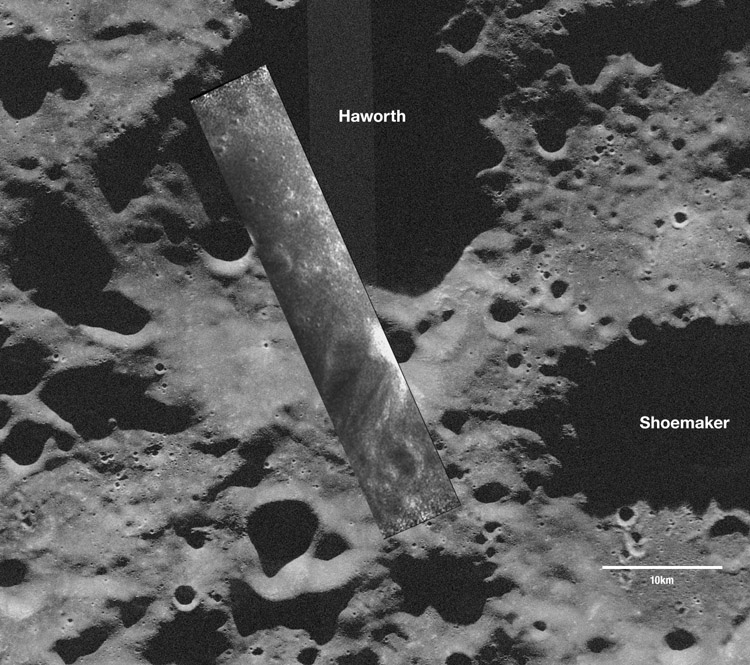May 17, 2018
Pinging the Poles
Originally published January 17, 2009

image from ISRO/NASA/JHUAPL/LPI/Cornell University/Smithsonian
One of the biggest scientific puzzles today is whether ice exists in the permanently shadowed craters at the lunar poles. The Chandrayaan-1 lunar orbiter and the forthcoming Lunar Reconnaissance Orbiter both carry a small radar (Mini RF) that will beam pulses of energy into these dark craters to image their floors and make measurements of their physical characteristics. The first results of this radar imaging have just been released, showing a swath over the south polar crater Haworth. The NASA release says the swath is 50 by 18 km, but the scale bar indicates 42 by 7 km. The release is also titled NASA Radar Provides First Look Inside Moon’s Shadowed Craters but the Kaguya ultra-sensitive Terrain Camera successfully imaged the forever-dark floor of Shackleton crater last year. The Mini-RF doesn't reveal anything unusual about the floor of Haworth - it has a number of small impact craters that will permit an estimate of its age. If they give an old age (a few billion years) their relatively sharp edges argue against slow accumulated of ice from comet impacts. And each place where a crater occurs would evaporate and deplete any ice that might have existed. The radar has also determined that the interior of a small, dark-shrouded crater near Shakleton has a real hard surface, different than other surfaces pinged so far; perhaps consistent with ice. These radar images were collected in November; presumably many more are now available - formal interpretation is promised for January 29.
Chuck Wood
Technical Details
MINI-RF
Related Links
Rükl plate 73
Yesterday's LPOD: Historical Footnote, 40 Years Late
Tomorrow's LPOD: Classical Imbrium
COMMENTS?
Register, Log in, and join in the comments.



